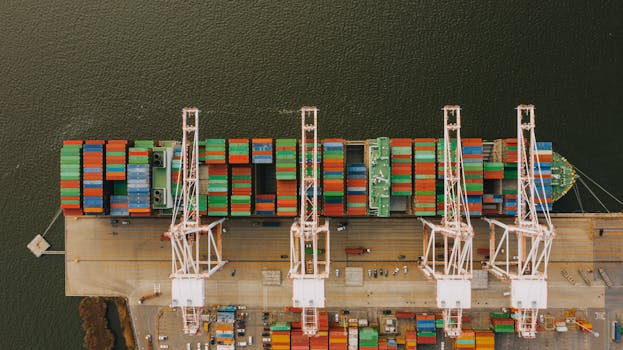Companies with the best and the worst technicals.
Lists of companies in NSE500 with the best and the worst technicals...
Lists of companies in NSE500 with the best and the worst technicals...
Lists of companies in NSE500 with the best and the worst fundamentals...
List of the latest important filings for NSE500....

This article explores the economic consequences of the recent halt in trade...

This article explores the outcomes of the India-U.S. trade talks focusing on...

This article discusses how bond forwards could reshape India's debt market, offering...

As the geopolitical landscape continues to evolve, India finds itself uniquely positioned in the crosshairs of escalating tensions between the United States and China. The trade conflicts stemming from the two superpowers not only impact their bilateral relations but also resonate throughout the global economy, creating both challenges and opportunities for other nations.
The U.S.-China trade war, which intensified in 2018 under the administration of President Donald Trump, was characterized by waves of tariffs and counter-tariffs on billions of dollars worth of goods. This conflict has led to significant disruptions in global supply chains, prompting countries to reconsider their trade dependencies. India, recognized as one of the world's fastest-growing major economies, has begun to capitalize on this shifting dynamic.
In the fiscal year 2021-2022, India's total exports reached $417 billion, reflecting a rapid rebound from the pandemic. Amid the fallout from U.S.-China tensions, India has been strategically strengthening its trade partnerships with various nations. In June 2021, India's Prime Minister Narendra Modi announced a renewed focus on bilateral trade relationships, targeting an increase in exports and foreign investments.
The India-U.S. partnership, in particular, has seen a surge in cooperation. In 2022, the U.S. became India's largest trading partner, with bilateral trade amounting to over $113 billion according to the Ministry of Commerce and Industry. Sectors like information technology, pharmaceuticals, and textiles have benefitted from this alignment. For instance, the Indian IT sector is expected to cross $300 billion in revenue by 2025, with a large proportion attributed to U.S. clients.
With U.S. efforts to decrease reliance on China, India has positioned itself as an attractive alternative for companies seeking to diversify their supply chains. The Production-Linked Incentive (PLI) Scheme, launched in 2020, incentivizes domestic manufacturing and aims to reduce imports. For example, the government allocated approximately $10 billion towards this initiative, encouraging investments across various sectors including electronics, textiles, and automotive.
In 2023, Apple Inc. announced plans to shift 25% of its production from China to India, reflecting growing confidence in the Indian manufacturing landscape. As companies reconsider their global strategies, India stands to gain from the repositioning of manufacturing hubs, capitalizing on its young workforce and relatively lower labor costs.
In response to the changing global trade environment, India has actively engaged in regional trade agreements that can bolster its economic standing. The Regional Comprehensive Economic Partnership (RCEP), which India decided not to join in 2020, is seen as a missed opportunity. Instead, India has been negotiating the India-UAE Comprehensive Economic Partnership Agreement (CEPA), expected to double bilateral trade to $100 billion by 2030.
Through such agreements, India aims to strengthen its export capabilities while simultaneously reducing its import deficit. The ongoing negotiations with the U.K. for a Free Trade Agreement (FTA) are also notable, with the objective of enhancing trade relations between the two countries, targeting a FTA by 2024.
Foreign Direct Investment (FDI) in India has shown resilience amid global uncertainties. In the April-June quarter of 2022 alone, India received $6.1 billion in FDI across various sectors, indicating sustained investor confidence. The key sectors attracting FDI include telecommunications, computer software, and financial services. India's commitment to creating a business-friendly environment, coupled with strategic reforms, holds promise for future investments.
Further, the introduction of the National Infrastructure Pipeline (NIP), totaling about $1.4 trillion, aims to boost infrastructure development across the nation, thereby improving India's competitiveness in the global market. The NIP envisages projects across various sectors, including transportation, energy, and urban development, making India a more appealing destination for international businesses.
As the U.S.-China tensions continue to create ripples in the global trade landscape, India remains steadfast in its approach to leverage this scenario to its advantage. By fostering strategic partnerships, enhancing manufacturing capabilities, and investing in regional trade agreements, India is navigating these complex dynamics in a bid to emerge as a major global player in the years to come.

The proactive measures taken by Indian airlines in response to the Pahalgam...

This article examines the stock market volatility and investor behavior in India...